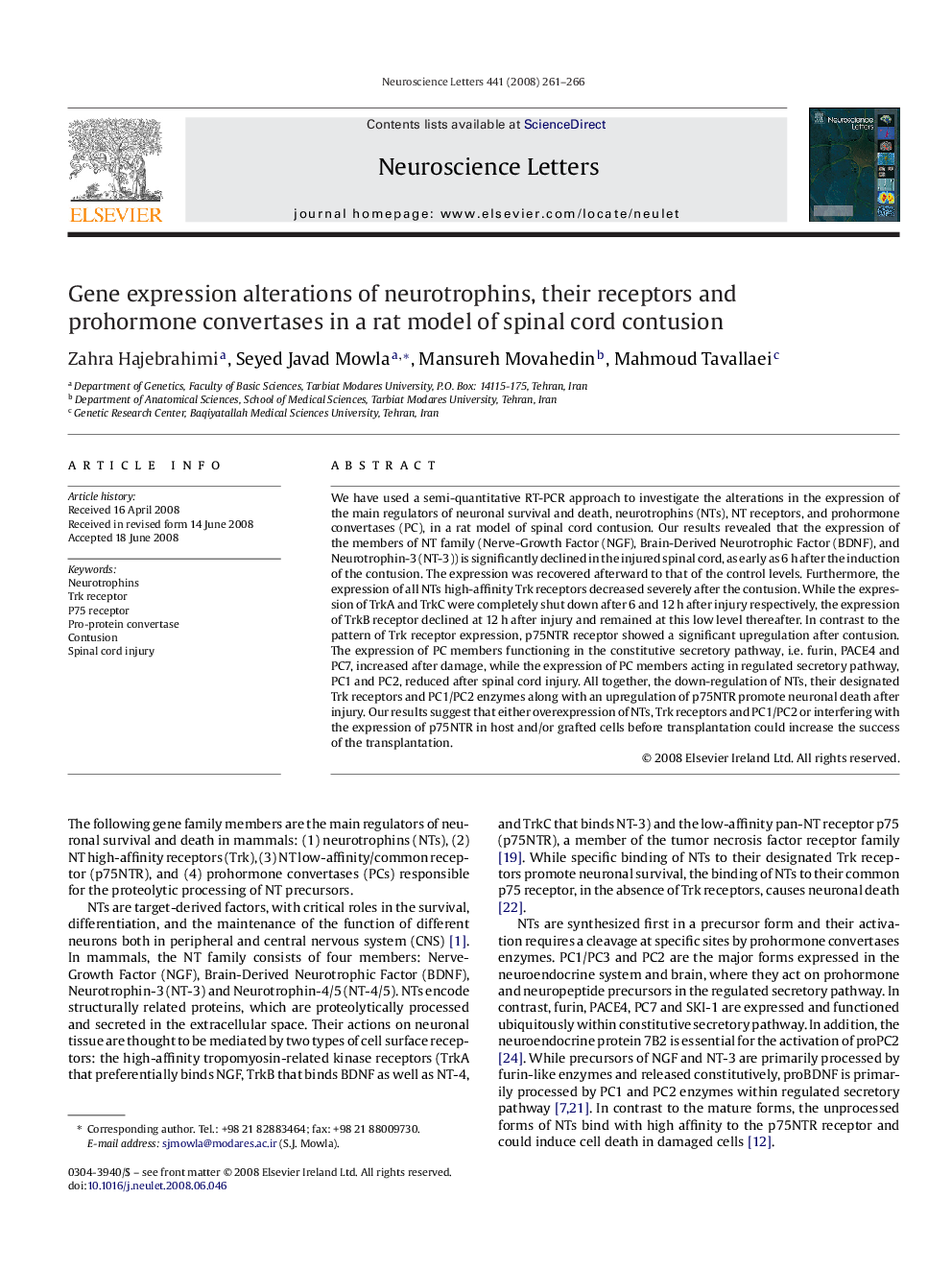| Article ID | Journal | Published Year | Pages | File Type |
|---|---|---|---|---|
| 4348383 | Neuroscience Letters | 2008 | 6 Pages |
We have used a semi-quantitative RT-PCR approach to investigate the alterations in the expression of the main regulators of neuronal survival and death, neurotrophins (NTs), NT receptors, and prohormone convertases (PC), in a rat model of spinal cord contusion. Our results revealed that the expression of the members of NT family (Nerve-Growth Factor (NGF), Brain-Derived Neurotrophic Factor (BDNF), and Neurotrophin-3 (NT-3)) is significantly declined in the injured spinal cord, as early as 6 h after the induction of the contusion. The expression was recovered afterward to that of the control levels. Furthermore, the expression of all NTs high-affinity Trk receptors decreased severely after the contusion. While the expression of TrkA and TrkC were completely shut down after 6 and 12 h after injury respectively, the expression of TrkB receptor declined at 12 h after injury and remained at this low level thereafter. In contrast to the pattern of Trk receptor expression, p75NTR receptor showed a significant upregulation after contusion. The expression of PC members functioning in the constitutive secretory pathway, i.e. furin, PACE4 and PC7, increased after damage, while the expression of PC members acting in regulated secretory pathway, PC1 and PC2, reduced after spinal cord injury. All together, the down-regulation of NTs, their designated Trk receptors and PC1/PC2 enzymes along with an upregulation of p75NTR promote neuronal death after injury. Our results suggest that either overexpression of NTs, Trk receptors and PC1/PC2 or interfering with the expression of p75NTR in host and/or grafted cells before transplantation could increase the success of the transplantation.
